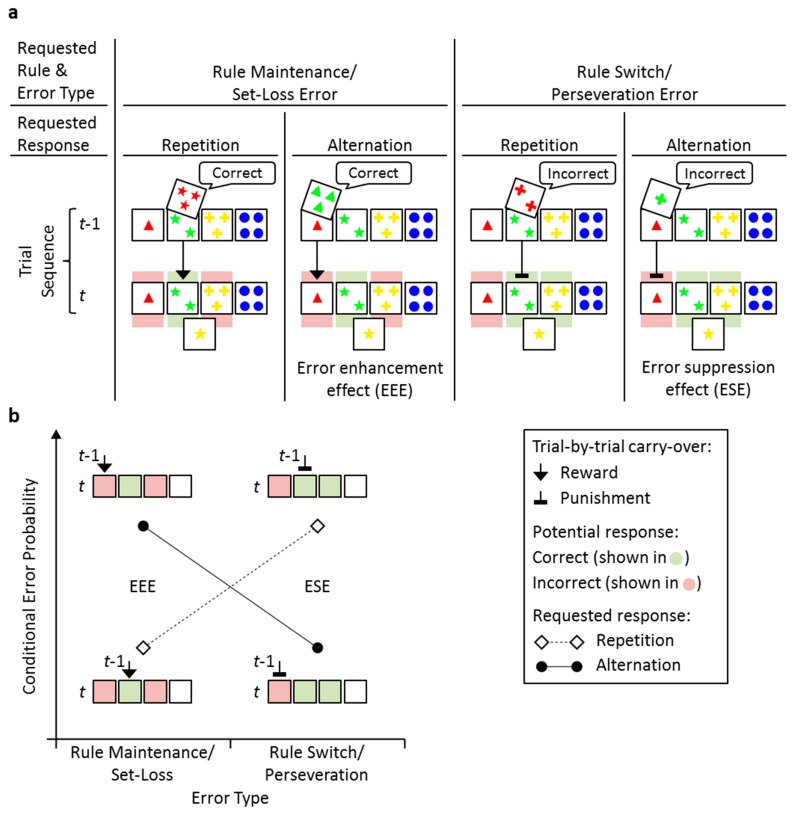Figure 1.
Exemplary sequences of two consecutive trials (i.e., t − 1, t), separately for requested rule maintenance and rule switch sequences (as indicated via positive and negative feedback on trial t − 1, respectively), and for requested response repetition/alternation sequences. Note that ‘odd’ errors on trial t were excluded from consideration (see Section 2. Materials and Methods for definition). (a). Left panels. ‘Correct’ feedback in response to sorts according to the Shape rule, which occur on trial t − 1, signal that the currently applied rule should be maintained on the upcoming trial; subsequent rule switches on trial t are hence erroneous because they obey either to the Number rule or to the Color rule. Note that these types of errors are traditionally considered as set-loss errors. Right panels. ‘Incorrect’ feedback in response to sorts according to the Number rule, which occur on trial t − 1, signal that a rule switch is requested on the upcoming trial (to obey either to the Shape rule or to the Color rule); maintenance of the currently applied rule on trial t would hence be erroneous. Note that these types of errors are traditionally considered as perseveration errors. The black symbols (arrows, cul-de-sac signs) illustrate potential response-specific carry-over from trial t − 1 to trial t, i.e., reward in case of ‘Correct’ feedback, or punishment, in case of ‘Incorrect’ feedback. (b). Further clarification of the response-level analysis of performance on the WCST (see Section 1. Introduction for details). Conditional Error Probability: Probability of an error given feedback type (‘correct’, ‘incorrect’) and response demand (repetition, alternation).

